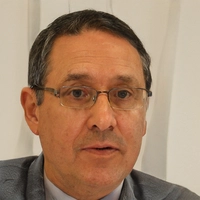
Which Country Tops the World in Math? Rankings, Facts, and Insights
If you walk into a classroom in Singapore, don't be shocked to find seven-year-olds breezing through word problems that stump adults elsewhere. That's not a fluke. For years, Singapore has claimed a near-legendary reputation in the world of mathematics, standing tall at the top of rankings from international tests. At the same time, parents in the United States and parts of Europe battle flashcards and apps, hoping their kids might close the gap. But why is Singapore, a tiny nation with fewer people than New York City, #1 in math? And are they really unbeatable, or is the story more complicated?
Math Rankings: The Big Picture
Every few years, the world’s students line up for the ultimate math showdown. There’s no trophy, but the stakes are sky-high, impacting policies, curricula, and even international ambitions. The two most-watched competitions? The Programme for International Student Assessment (PISA) and the Trends in International Mathematics and Science Study (TIMSS). PISA quizzes 15-year-olds from dozens of countries with a focus on problem-solving and application, while TIMSS targets younger students and drills down on curriculum-based skills.
You want numbers? Let’s see how recent math results played out. In the most recent rounds (PISA 2022 and TIMSS 2019), Singapore took the gold in both. Here’s a snapshot of top countries using TIMSS Grade 8 results:
| Rank | Country | Average Score |
|---|---|---|
| 1 | Singapore | 616 |
| 2 | Hong Kong SAR | 606 |
| 3 | South Korea | 607 |
| 4 | Taiwan | 612 |
| 5 | Japan | 594 |
The usual suspects hang out at the top: East Asian nations. Singapore, Hong Kong, Korea, Taiwan, and Japan dominate the scoreboard. Western countries, like the US and much of Europe, hover below the global average (US in 2019 scored 515 in TIMSS Grade 8 math, for example).
If you start looking further back, you spot a pattern: consistency. Singapore has ranked top-three for more than two decades. But does that mean Singapore deals in math wizards? Or is there something deeper going on—something other countries can actually learn from?

Why Singapore Leads: Digging Into the System
There’s more to Singapore’s math success than just smarts. Their edge comes down to strategy. The famous Singapore Math method, which started in the 1980s, flips the way most countries teach. Instead of rushing ahead topic by topic, Singapore’s curriculum is laser-focused. Kids stay on one thing until it clicks for everyone. Take fractions—they’ll drill into how, why, and where to use them in life before ever moving on.
Teaching quality is another huge piece of the puzzle. In Singapore, teachers go through rigorous training, and their professional status is high. Their math teachers don't just get one short workshop; they dive into detailed math concepts, classroom management, and continuous improvement. Students with early struggles? Teachers spot and help them fast, instead of letting gaps grow.
One thing that blows visitors’ minds: real-world math from day one. Instead of memorizing by rote, Singapore kids solve practical stuff—calculating taxi fares, figuring grocery discounts, even planning party budgets. That focus on understanding, not memorizing, is a game-changer. Best country for math seems less about drilling kids for the next test, more about making math part of how they think.
Check any Singaporean math textbook, and you’ll spot another secret: the “Concrete-Pictorial-Abstract” approach. Kids start with hand-on objects (like blocks), move on to pictures, and—only when ready—tackle the numbers and symbols. It’s not magic, but it works. In fact, this method has now been imported into schools worldwide, like the UK and US, which are hoping for a piece of the Singapore secret sauce.
Another less obvious factor? Culture. In East Asia, students, teachers, and even families see math success as less about being “born with it” and more about putting in the work. Errors are seen as chances to improve—nobody gets shamed for making mistakes if they’re honestly trying. That mindset lifts everyone up, even the kids who start off shaky.
Don’t just take my word for it. Andreas Schleicher, head of the PISA study, said,
“In Singapore, the education system has managed to ensure that every child succeeds, regardless of their family background. The belief that all students can achieve at a high level in mathematics is real here.”

What Can Others Learn—and Is Math Everything?
Here’s where the plot thickens. Singapore sits at the math summit, sure, but is it flawless? If you ask students there if they love math, you might get a mix of high-fives and groans. The pressure to ace every test is huge, and burnout is real—some kids start after-school tutoring as early as six. Policymakers around the world drool over Singapore’s results, but regular families sometimes wish for more balance in life.
Meanwhile, other countries are catching up. Estonia, for example, popped into the PISA top ten and wowed Europe with its surprisingly strong math showing. How’d they do it? Estonia slashed class sizes, gave teachers more respect and pay, and bet big on tech in the classroom. Stunning, considering the country’s tiny budget and size.
So, if you want your child to thrive in math and not just survive, what lessons can you steal from Singapore and friends? Here are a few pro tips based on what’s working for the world’s math leaders:
- Break topics into chunks: Don’t skip ahead before you understand the basics—solid foundations beat speed.
- Make mistakes your friend: Treat mistakes as a learning tool, not a cause for embarrassment.
- Practice, but with purpose: Use real-world examples—cooking, shopping, sports stats—to make math stick.
- Use visual aids: Start with objects or drawings if the numbers aren’t clicking.
- Find the right help: Some of the best countries train math teachers seriously—look for tutors or classes that focus on understanding, not just memorizing steps.
But, let’s zoom out. Being #1 in math doesn’t tell the whole story. Some countries that lag in rankings still crank out brilliant inventors, engineers, and thinkers because they value creativity along with computation. The US, for example, rarely hits the math podium in tests but is home to more Nobel laureates in science than any other country. That’s not a coincidence—sometimes there’s more than one way to measure “math success.”
If your kid’s school isn’t topping the charts, don’t panic. All these stats are a starting point, not the final grade. The real key? Curiosity, hard work, and a system that helps every student see math as something they can master, not something you’re born either loving or hating. Whether you want to ace the next test or just figure out your phone bill, that’s a lesson worth learning from any country.





